As we — as individuals, corporations and businesses — become more aware of how we are affecting the planet, eco-friendliness has become a rising trend across the board in marketing. New eco-friendly brands are popping up everywhere to provide easy and accessible green options such as less plastic, recycled packaging, sustainable products, organic food and more.
If you’re a small business owner and you want to dip your toes into green branding, there is a lot you can learn from successful eco-friendly brands. Let’s take a look at 11 eco-friendly brands that are positively affecting our planet and finding huge success in the process.
- Eco-friendly branding makes it easy for customers to find and identify your product.
- Authenticity is key for eco-friendly brands.
- Tell stories that explain how your products and brand help the planet.
- Recycled and sustainable packaging materials are must-haves for eco-friendly products.
Top 11 eco-friendly brands
Beyond Meat
Talk to any environmentalist, and they’ll agree that the biggest problem facing our generation is climate change. And one of the biggest contributors to this environmental crisis? The conventional meat industry.
That’s where Beyond Meat comes in.
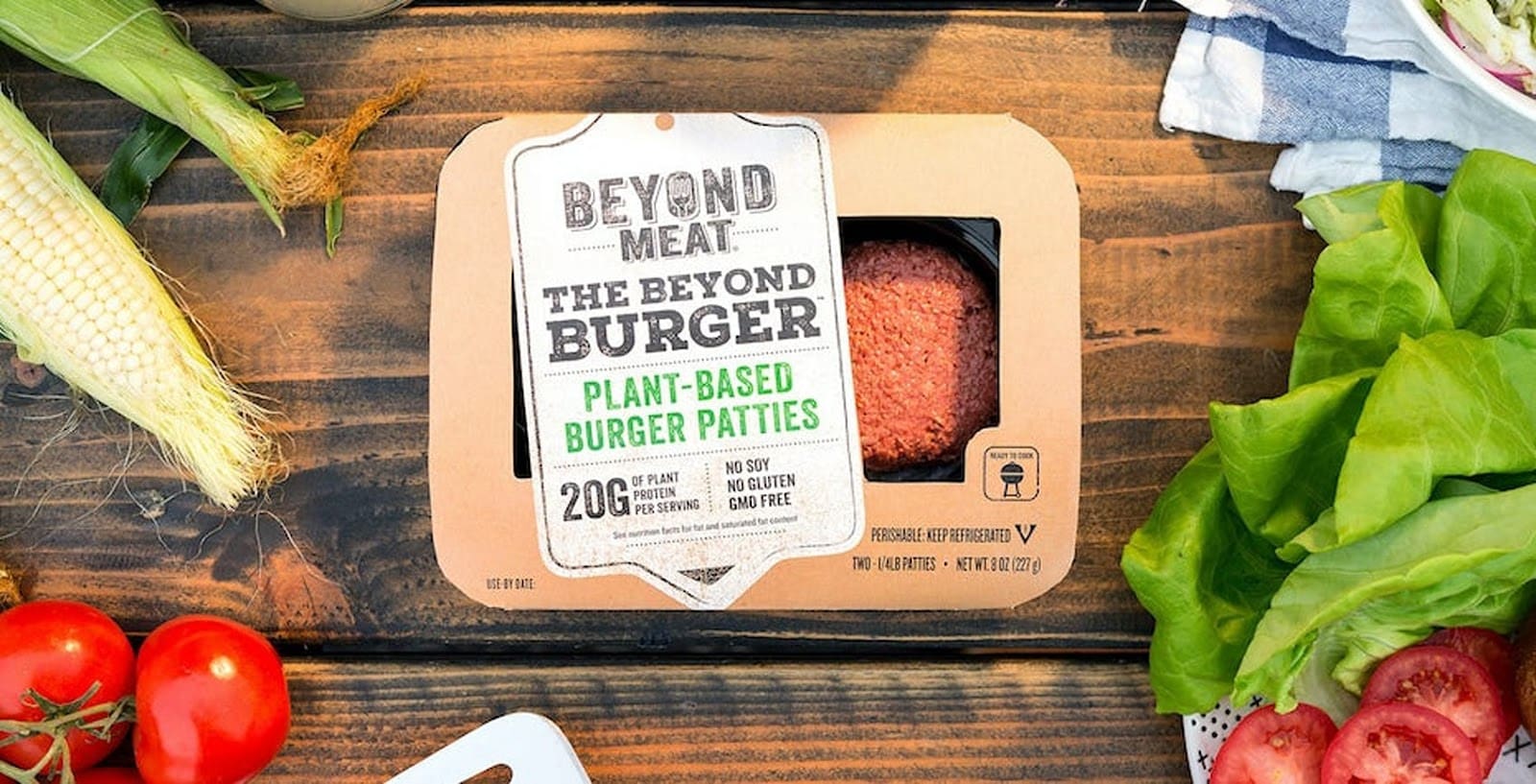
Source: via Beyond Meat
Beyond Meat is shaking up the food industry by creating delicious, plant-based “meat” products (carnivore approved!) that are better for human health, the environment, climate change and animals. The taste? Fantastic.
How does Beyond Meat use green branding?
Beyond Meat’s branding focuses on the good the business is doing for the environment and its consumers. By combining cool graphics and drool-worthy product photos, its branding is able to show benefits on all sides: how its products are saving the planet and saving its consumers’ bodies. The product’s benefits are highlighted in bold text, catching shopper’s eyes as they scan supermarket freezer cases.
How can you be like Beyond Meat?
Sometimes all it takes to protect the environment is thinking outside the box. If your industry isn’t traditionally eco-friendly, find ways to highlight how your commitment to the environment stands out.
For example, if you own a small printing company, you might offer a discount to your customers who print on recycled paper. There’s an opportunity in every business to be more green — even the unexpected ones. Sometimes, you’ve just got to get a little creative.
Who Gives A Crap
Who Gives A Crap offers an environmentally friendly toilet paper that is “good for your bum and great for the world” as they say. Its products are 100% plastic free and have options made from 100% recycled paper or 100% bamboo.
Additionally, 50% of the profits are donated to help build toilets for communities in need around the world. The business has a number of community partners who already have been doing good work, proving that it is both beneficial and practical to leave effective community work to the experts.
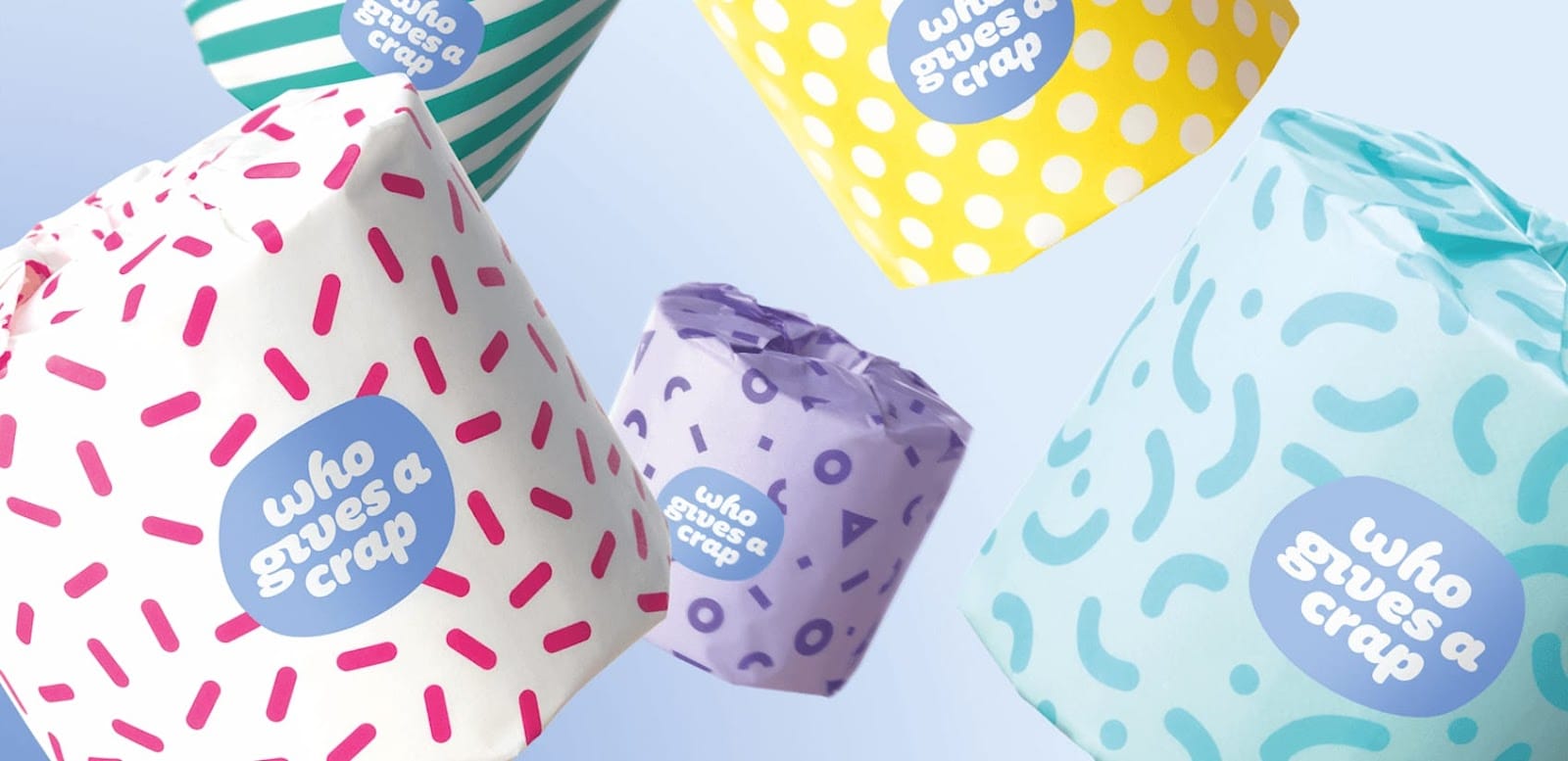
Source: via whogivesacrap.org
How does Who Gives A Crap use green branding?
Who Gives A Crap embraces the “do good, feel good” side of philanthropy. Its branding is all about fun colors and design, and it uses humor in social media and marketing initiatives without diminishing the quality of its product and community impact. The brand tone and style are also big on potty humor, which is something anyone can get behind!
How can you be like Who Gives A Crap?
Who Gives A Crap is very honest and encouraging about its philanthropy, saying, “We weren’t always making multimillion dollar donations — our first ever donation was to WaterAid for $2,500 Australian dollars. But because we established our donation model in the very beginning, we’re able to scale our business while prioritizing impact, all with the help of our customers who believe in our mission.”
It’s okay to start small when giving back, but if you start budgeting accordingly, your donations can grow, along with the heart of your company.
Patagonia
Patagonia is one of the world’s most successful activewear retailers, selling everything from snow gear to fleece to sleeping bags that appeal to the all-things-adventure crowd.
And because those folks are typically also very eco-conscious, Patagonia’s corporate philosophy is all about going green. The business has built repair centers around the world to increase the longevity of its products and lower its carbon footprint. In 2016, the business pledged $10 million of its Black Friday sales to grassroots environmental groups dedicated to preserving and improving the planet.

Source: via Patagonia
Patagonia’s corporate philosophy is “100% For the Planet,” but they’re not perfect. The business has been open and honest about the areas that need improvement, like using fossil fuels to produce shells for their coats, which contributes to climate change.
Patagonia’s commitment to changing and improving those processes and moving in the direction of becoming more sustainable and eco-friendly sets it apart from its not-so-green competitors.
How does Patagonia use green branding?
Patagonia’s rugged design and nature focus speak to its outdoorsy target audience but also echo its commitment to protecting the wilderness that acts as the focal point of its brand.
How can you be like Patagonia?
Not 100% eco-friendly yet? It’s OK. No one’s expecting you to be perfect. Being transparent and making the commitment toward a more sustainable business will connect with your customers.
For example, let’s say you haven’t implemented a company recycling policy yet. Be open, be transparent and let your team and customers know that you’re working on a solution.
Green Toys
Part of raising a healthy baby is providing a healthy environment, and don’t you think taking care of the natural environment is part of that too? Green Toys is an Eco Mama’s dream: not only are the toys safely made for your baby, but they are made with 100% recycled materials.
The toys are made from recycled plastic milk jugs, packaged in recycled materials and printed with soy ink. The business production system diverts material from landfills, which saves energy and reduces its carbon footprint. Additionally, Green Toys is 100% US-made, which reduces greenhouse gasses, energy and transportation.
How does Green Toys use green branding?
With a name like Green Toys, you can bet that the branding uses a lot of green colors! The brand’s website features enchanting images of kids having fun — that’s also good for the environment.
The business mission statement is simple: raising awareness about sustainability while delivering unquestionably safe products. And as such, the business attracts the kind of parents and customers that are dedicated to going green as well.
How can you be like Green Toys?
If you are truly dedicated to going green with your company, consider all the products and materials you use to do business — where do you source your office supplies, where does the food you serve come from, what is the clothing you sell made of?
Embrace transparency and tell the story behind each material. Feature the story on your website and marketing materials. Customers will appreciate the care that goes into your product and will become loyal to your brand.
Wipro EcoEnergy
Wipro EcoEnergy is doing big things in the world of green business by providing “intelligent and sustainable solutions for enterprise-wide energy operations and efficiency management.” In other words, Wipro EcoEnergy partners with companies to help them reduce their carbon footprints and energy wastage, which saves them a ton of money.
Source: via Wipro EcoEnergy
Wipro keeps those client savings numbers under wraps, but they’re much more open about how they’ve helped the environment. To date, its energy management services have saved over 1.5 billion KwH, which is equivalent to taking over 222,600 cars off the road for a year.
How does Wipro EcoEnergy use green branding?
As a consulting company, Wipro stays in the background and lets its customers’ results speak for themselves. That’s completely evident in its branding and design. The Wipro website is clean and simple, illustrating the environmental impact its services have for its clients and letting the results take center stage.
How can you be like Wipro EcoEnergy?
When going eco-friendly, make it a win-win for your customers. Wipro was able to slash its clients’ energy costs and reduce their carbon footprint at the same time. Think of ways that you can show your clients how green practices not only benefit the environment, but directly benefit them, as well.
Thinx
An individual can go through approximately 11,000 disposable pads and/or tampons in a lifetime, and when you multiply that number by everyone with a period on this planet, that results in a substantial amount of waste.
Thinx period-proof panties have the look and feel of regular underwear, but with its famous technology, the product can hold up to four tampons’ worth of menstrual fluid. This is a much more sustainable solution than single-use products! Thinx crafts its underwear carefully and consciously, from its sustainable manufacturing processes to the ethical working conditions where it is made.
Source: via Thinx
Co-founder Miki Agrawal was first inspired to donate a portion of Thinx’s proceeds to support women’s organizations in the developing world when she learned that millions of girls were missing school due to lack of access to menstrual supplies and the shame associated with periods.
Since then, the company has developed new initiatives and partnered with community organizations to fight for better access to puberty education, amplify grassroots activism and donate the business’ underwear and time.
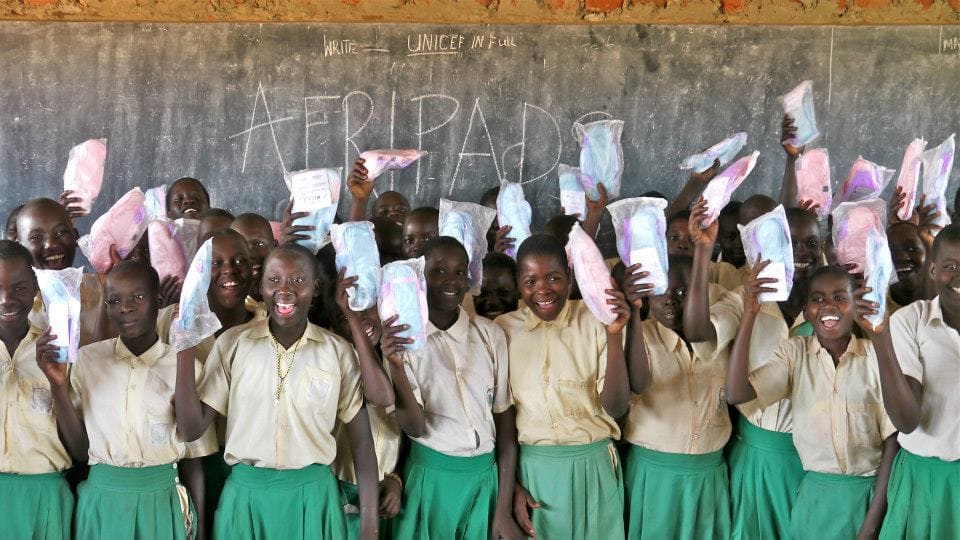
Source: via shethinx.com
How does Thinx use green branding?
Thinx has created a brand that successfully connects with its targeted audience and customers. Chances are you’re already aware of Thinx due to its relentless targeted advertising on social media.
The brand created a voice that is witty and unbashful, paired with clever imagery featuring natural colors and photos of natural, unashamed bodies. This new way of marketing bleeds into the business’ other values of providing a good, sustainable product that also does good for the world.
How can you be like Thinx?
Doing good for the environment and doing good for humanity go hand in hand. Find a cause/mission you’re passionate about and make it the driving force behind your brand. If you’re already an established company, no worries! You can still identify a cause you feel strongly about (and a green cause at that!) and integrate it into your brand.
For example, if you want to bring clean water to communities in need, do a “corporate takeover” for one month out of the year. Redesign your website and marketing materials to focus on your clean water initiative and donate a part of your sales for that month to your cause.
When your customers see the good you’re doing in the world, it will build an emotional connection. They’ll want to be a part of what you’re doing, and as a byproduct, sales will soar.
Pela
Pela is driven by its mission to create a waste-free future. They believe that the technology exists to make everyday products without everyday waste, it just takes the right company with the right community to make these products the new normal. They were inspired by the 60,000+ plastic phone cases that are thrown away each year and have developed the first phone case that’s 100% biodegradable.
Source: via pelacase.com
Since then, they have expanded to smartwatch bands, air pod cases and sunglasses. All of its products are made of biodegradable and compostable materials and free of BPA, lead, cadmium and phthalates. Not to mention, the designs are super cute and creative!
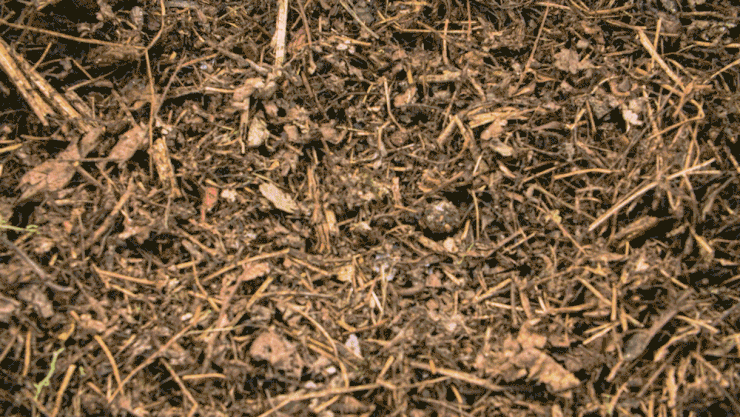
Source: via pelacase.com
How does Pela use green branding?
Jeremy Lang founded Pela after seeing first-hand the damage plastic was doing to our oceans while on a family vacation in Hawaii, which accounts for the gnarly surfer vibes you’ll see in its Instagram account. If surfers like it, you can bet it’s good for the environment! The Pela brand showcases a lifestyle that is both chic and eco-friendly.
How can you be like Pela?
With some of Pela’s products, a portion of the sale is donated directly to causes the business cares about. Consider doing the same with your company’s merchandise! A line of apparel you sell or one cocktail on the menu can benefit an environmental cause of your choosing.
YesStraws
Disposable plastic straws are harmful to our environment. They are one of the 10 most frequently found things on the beaches and are the cause of death to thousands of fish and animals.
In an effort to change our habits and protect wildlife, plastic straw bans have been enacted across the country in major cities like Seattle, Portland, Milwaukee and Washington DC; some states like Virginia and California; and some with some brands like Starbucks, Hyatt and SeaWorld.
Rising from these changes came many eco-friendly straw alternatives, like YesStraws.
Source: via yesstraws.com
YesStraws produces 100% biodegradable straws made from natural materials so you can enjoy your drink comfortably without damaging the Earth. These straws use raw materials from renewable sources, like wheat and cane stems, which are fast-growing, compostable and biodegradable. Their brand also helps by educating the local community about ecologically conscious lifestyles.
How does YesStraws use green branding?
YesStraws lets its product speak for itself with branding as a sensible and effortless straw alternative. The brand uses a simple web layout and mouth-watering photos of cocktails to show how its products are sustainable and good for the environment.
How can you be like YesStraws?
When you start thinking about environmental problems and your impact, you soon realize that every tiny habit and item matters. It’s easy not to buy harmful products when the harmful products aren’t available to buy (like a ban on straws), but it’s also easy to choose an eco-friendly alternative when it is available.
Think about other harmful products and develop alternative solutions — even if one already exists, maybe yours can be better made and better marketed!
Native Shoes
What happens to your shoes when they’ve taken their last step? Most shoes are made of harmful synthetic materials that cannot be recycled, and every year, 300 million pairs of shoes end up in landfills.
Native Shoes is changing the game of footwear using unique manufacturing techniques and vegan materials to lighten its carbon footprint on the world. They also reduce waste by collecting old pairs of Native Shoes to give them new life as playground flooring and insulation.
Most notable is their groundbreaking, limited edition Plant Shoe, the first 100% biodegradable shoe made of all-natural materials that can be composted after use.

Source: via Native Shoes
How does Native Shoes use green branding?
As they state in their mission “We are lighthearted by nature, for nature. Like the shoes we design, we believe life should be happy, colorful, carefree and fun.” The brand design is simple, colorful and, in all senses of the word, light.
How can you be like Native Shoes?
Native Shoes shows that doing good for the environment can also be good for your mental health while taking small steps toward positive change. Your company’s commitment to the environment can come from celebration rather than obligation.
Start a new initiative to only order office meals from organic, sustainable restaurants and taste how good doing good can be.
Numi Tea
You won’t find a better (and more eco-friendly) tea than Numi.
Numi Tea has sustainability in its DNA. Its mission is to unite mind, body and spirit through tea, and it extends that holistic idea to helping protect our planet.
Not only do they talk the talk, they walk the walk. Everything Numi Tea does ties back to its mission: from sustainable packaging to making donations to environmental nonprofits to tracking carbon emissions during the production process. The business makes sure every step in sourcing, making and selling its tea is environmentally sound.
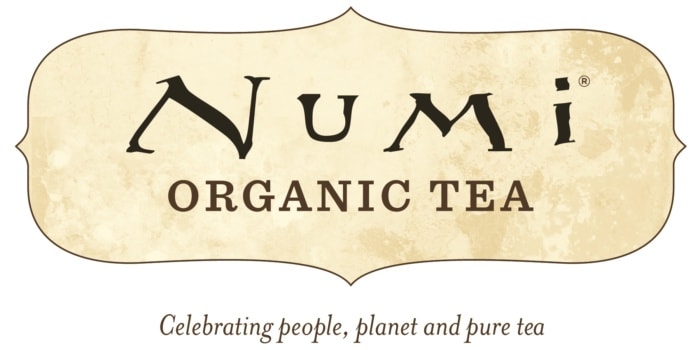
Source: via Numi Tea
Numi Tea is also the brainpower behind OSC2 (One Step Closer to an Organic Sustainable Community), a group of CEOs and business leaders from the sustainably-focused, natural products industry that is dedicated to improving sustainability across all industries. Numi Tea is dedicated to improving not only its own practices, but business practices across the board. Now that’s commitment.
How does Numi Tea use green branding?
Everything in Numi Tea’s design and branding screams organic and eco-friendly. Just like green practices are a part of its brand DNA, that eco-friendly look and feel is a part of its design DNA as well. Numi uses a lot of earth tones like brown in its design and branding.
This isn’t super common, but it makes total sense for an organic brand. When people see brown (the color of soil) combined with their overall eco-friendly branding, they feel connected to everything earthy.
How can you be like Numi Tea?
The reason why Numi Tea is so successful in its sustainable practices is that it’s part of who they are. Insert sustainable practices into the core of your company mission. When it’s part of who you are as a brand, it will infiltrate everything you do, and being green will become effortless.
Say you own a surf shop. Make green practices part of your brand by only selling boards made out of recycled materials or organizing a monthly beach cleanup with your team.
Seventh Generation
Seventh Generation is a cleaning products company that revolutionized the cleaning industry with eco-friendly cleaning free of harmful toxins and chemicals. Unlike other eco-friendly brands, which often cost more, Seventh Generation prices its items competitively, making it an affordable yet healthy choice that is not only safe for the environment but also for your family and pets.
It’s the one-two punch of being awesome for the environment and awesome for human health. The company also recently topped Forbes’ annual “Best For The Environment” list, which highlights companies that go above and beyond standard green practices.
How does Seventh Generation use green branding?
Similar to Numi Tea, Seventh Generation is so blatant with its eco-friendly design that it’s impossible to miss. Considering the business is so focused on the environment, it definitely feels true to its brand.
How can you be like Seventh Generation?
Seventh Generation is a pretty traditional green company, but the secret to the business’s success is how it has been able to expand outside of the typical customer base by highlighting product benefits that appeal to all consumers — not just eco-folks. If you can push your product’s other benefits (Seventh Generation focused on health), you’ll get even more customers behind your eco-friendly mission.
Go green with inspiration from eco-friendly brands?
Whether you’re already a green expert or you’re just dipping your toe into eco-friendly branding, there are lessons to be learned from these 11 sustainable companies. They’re crushing the competition, supporting the planet and staying true to their brand DNA along the way. That’s what we call winning.
Want more branding tips? Here’s how to create a great brand identity for your business.
Eco-friendly brands FAQs
What makes a brand eco-friendly?
Eco-friendly brands engage in a variety of sustainable practices like opting for recycled and sustainably sourced materials, using less packaging for their products, working with suppliers that prioritize sustainable practices and offering sustainable products like plant-based meat alternatives.
How can a small businesses adopt eco-friendly practices?
As a small business, you can adopt eco-friendly practices by doing the same things bigger eco-friendly companies are doing, like using sustainable materials and prioritizing eco-friendly products.
What is the most eco-friendly fashion brand?
Patagonia is often recognized as the most eco-friendly fashion brand.
What certifications can you get to show that your brand is eco-friendly?
Depending on your industry, you may pursue any or all of the following certifications:
- B Corp
- LEED
- Cradle to Cradle
- Energy Star
- Fair Trade
- Global Organic Textile Standard
Are eco-friendly products more expensive?
In some cases, eco-friendly products are more expensive than their non-sustainable counterparts. However, there are ways eco-friendly brands can make up for this added cost, like using less packaging and sourcing materials locally.
Author: Carrie Sownie
This article was originally written by Deanna DeBara and published in March 2017. It has been updated with new examples and information.